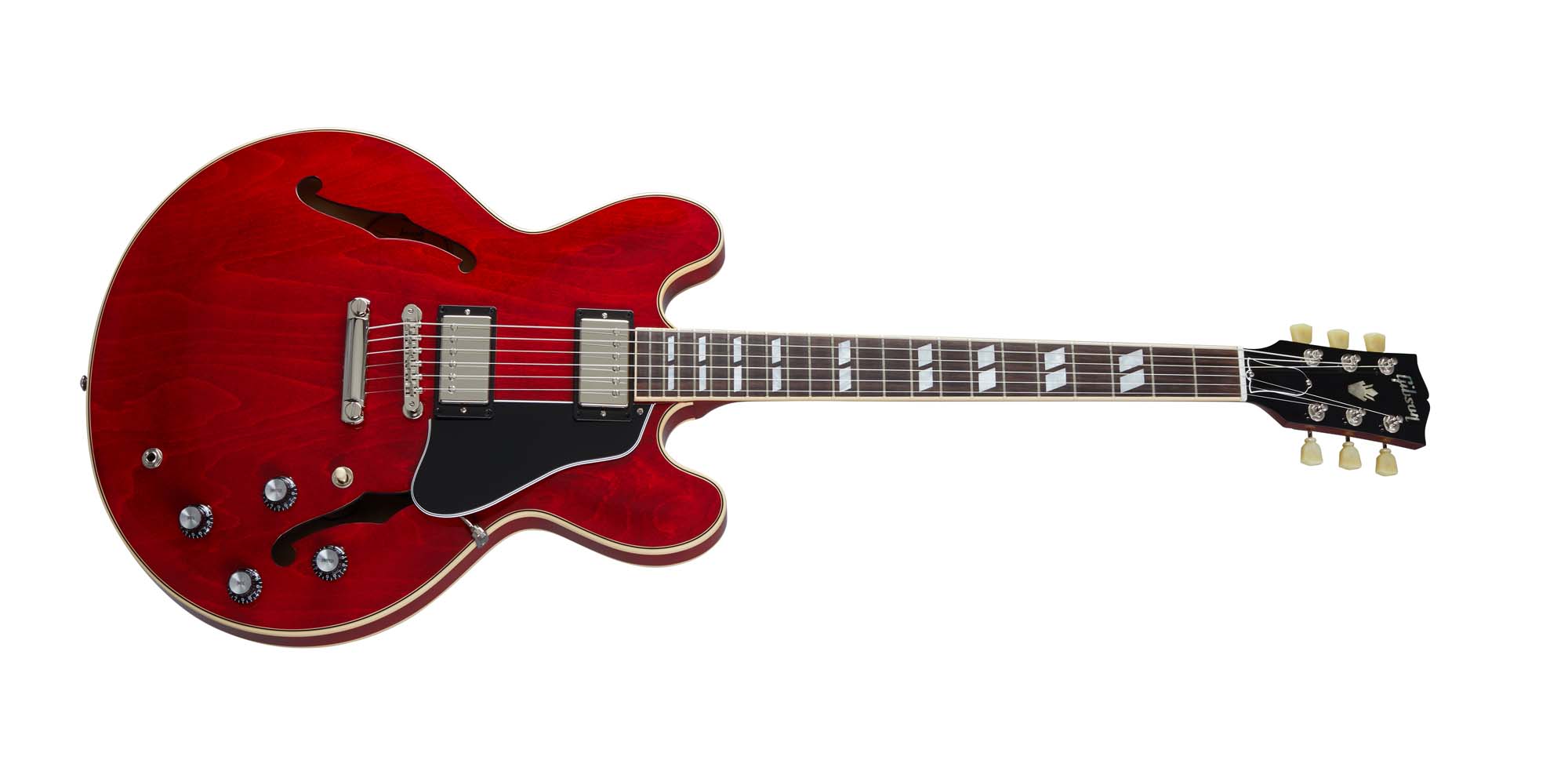Classic gear: Gibson ES-345
The history of the stereo guitar that promised “new magic to your music”

Whether it was being dwarfed by the ample stature of blues behemoth Freddie King, or dwarfing Michael J Fox in the chronologically challenged feature film Back To The Future, the 345 sat betwixt the groundbreaking 335 and the top-of-the-line 355 as the middle child in Gibson’s double-cutaway semi-hollowbody family.
Although the 345 made a cameo appearance in the aforementioned film during a scene set in 1955, it was actually unveiled by Gibson in the spring of 1959, in the wake of the seminal ES-335T (developed during 1957 and released in spring 1958) and the upmarket ES-355T (released in late 1958).
Gretsch had already embraced stereo with its Project-O-Sonic designs in ’58, and Gibson was hot on the company’s heels with the 345
Upon its release, the 345 was originally designated as the ES-345T and cost $345 in a standard sunburst finish. Later in ’59, its model name was altered to include a ‘TD’ (meaning ‘thinline/dual-pickups’) in line with other Gibson ‘ES’-prefixed Electric Spanish models, including the 335 and 355.
In Gibson’s November 1959 price list, the 345 was simultaneously offered in Cherry and Natural finishes, appearing alongside the Sunburst ES-345TD as the ES-345TDC and ES-345TDN respectively. Cherry 345s began to be shipped in 1960, during which time the Natural finish was phased out (ES-345TDNs are incredibly rare with a mere 50 registered as being shipped between 1959 and 1960).

345s are easily distinguished by their double-parallelogram fretboard inlays, while 355s have large blocks, and 335s have either dots or, from ’62 onwards, small blocks. The model is also notable for its stereo pickup configuration and Vari-tone circuitry.
With the arrival of stereo vinyl in the late 50s, stereophonic sound was all the rage. Gretsch had already embraced the concept with its Project-O-Sonic designs in ’58, and Gibson was hot on the company’s heels with the 345, followed by a stereo version of the 355 in mid-1959.
In order to differentiate it from the regular mono ES-355TD, this model was named the ES-355TD-SV (meaning ‘stereo/Vari-tone’). Despite the ES-345TD remaining stereo/Vari-tone-equipped as standard until its discontinuation in the early 80s, it was eventually rebranded with the same ‘TDSV’ suffix in the late 70s.
Get The Pick Newsletter
All the latest guitar news, interviews, lessons, reviews, deals and more, direct to your inbox!
• Spring 1959
ES-345T released; stereo/Vari-tone; stop tailpiece; optional vibrato; PAF humbuckers
• Late-1959
Vari-tone switch plate changes from black to gold
• 1960
Sunburst and Cherry finishes; Natural finish discontinued
• 1961
Shorter pickguard standard (does not extend below bridge) • 1963
Cutaway horns less rounded
• 1965
Trapeze tailpiece with raised diamond motif; T-top humbuckers; nut width decreases
• 1967
‘Bonnet’ knobs change to black ‘witch hat’ knobs; Sparkling Burgundy finish available
• 1968
Walnut finish available (ES-345TDW)
• Late-1970s
Renamed ES-345TDSV
• 1982
Discontinued
Although Gibson had high hopes for its stereo electric guitars, neither the ES-345TD/SV nor the ES-355TD-SV went on to achieve the same level of popularity as its inaugural semi, the 335 – its modest appearance and straightforward dual-pickup assembly with simple controls proving to be a winning combination over the decades.
Additionally, whereas the stereo 345s and 355s require a special ‘Y’ cable with a TRS jack to handle the output of separate pickup signals, the 335 just needs a regular guitar lead, and without the extra weight of a Vari-tone filter/capacitor array, 335s tend to be lighter.
With this in mind, Gibson now offers the ES-345 sans Vari-tone and stereo circuit as part of its golden era-inspired Original Collection.
Boasting vintage ‘T-top’ humbucker-style Alnico 5 T-Type pickups and resplendent in either a Sixties Cherry or Vintage Burst nitrocellulose finish, this Nashville-built modernised classic also features an aluminium Tune-o-matic bridge and sustain-friendly stop tailpiece as per the earlier, more desirable non-trapeze tailpiece examples produced up until ’65 (albeit with nickel-plating, as opposed to original-style gold-plating).
Rod Brakes is a music journalist with an expertise in guitars. Having spent many years at the coalface as a guitar dealer and tech, Rod's more recent work as a writer covering artists, industry pros and gear includes contributions for leading publications and websites such as Guitarist, Total Guitar, Guitar World, Guitar Player and MusicRadar in addition to specialist music books, blogs and social media. He is also a lifelong musician.
“It holds its own purely as a playable guitar. It’s really cool for the traveling musician – you can bring it on a flight and it fits beneath the seat”: Why Steve Stevens put his name to a foldable guitar
“Finely tuned instruments with effortless playability and one of the best vibratos there is”: PRS Standard 24 Satin and S2 Standard 24 Satin review











